Sponsored by Garmin
LiveScope has changed the game of ice fishing and, frankly, we don’t know if we can ever go back.
Even to this day, every trip out onto the ice with this technology brings with it a host of new learning experiences that are allowing us to understand more and more what these fish are doing beneath the ice.
While we know that these new high-tech units are certainly more luxury than necessity, those looking to enhance their ice fishing experience should definitely consider the upgrade.
Here are five ways that Livescope can help you catch more fish this season and a few tips to make the most of your new upgraded sonar!
1– See fish in true real-time
In last month’s How to Read a Fishfinder article, we talked extensively about the benefits of seeing fish in real-time and how it can make a world of difference when reacting to fish underneath the ice.
While that article may have seen us praise the use of A-Scope and Flasher Mode for these purposes, LiveScope takes it to a whole other level.
If A-Scope is equivalent to a drawing, LiveScope is like watching a movie.
Traditional sonars (such as A-Scope) do show you the moment that the fish enter your cone, however, LiveScope allows you to see exactly how fast the fish approached your bait. This is key to determining how effective your bait is at bringing them in as well as how aggressive they are when they approach.
This makes the decision to “leave fish to find fish” much easier as you can be sure that the slow-moving fish you are leaving are simply not in the mood to bite on that particular day.
2 – Determine fish size
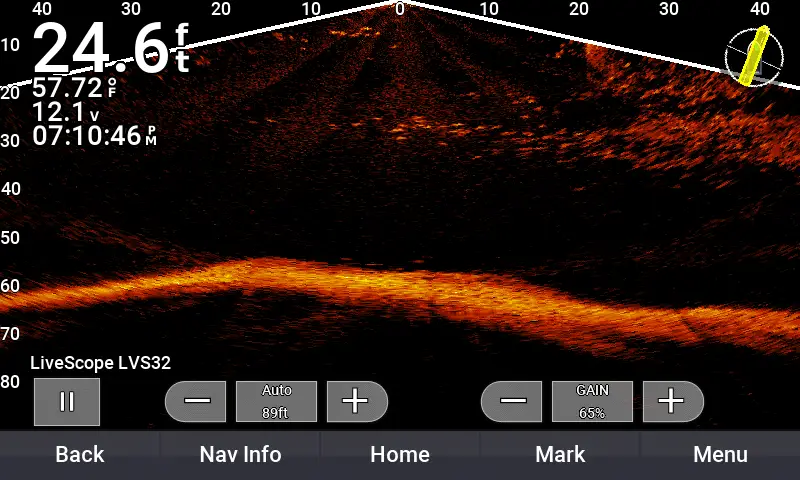
On the same note as “leaving fish to find fish”, determining fish size is another reason we love our LiveScope units.
As we mentioned in our How To Read A Fishfinder article, determining fish size is achievable using the traditional screen, however, this becomes much more difficult in shallow water as even fish barely larger than your jigging spoon will appear thick and deep-red.
For this type of shallow water fishing, LiveScope is a gamechanger. Once you get your settings right and develop an eye for the technology, LiveScope will allow you to see clearly how large a fish is and often times even what species it is.
No longer will you spend your walleye fishing days playing with small perch and you will now feel much more comfortable moving away from these areas now that you know exactly what you’re leaving behind.
3 – Expand your view
Expanding our field of view is one of the main reasons we love this new technology for hardwater fishing.
“You would be amazed how much you miss on your traditional screen,” says Pete Bowman. “I have seen, countless times, fish show up on the outer edges of my LiveScope well before my traditional screen even recognizes a movement.”
The key to gaining access to this extended view is Forward Mode. This mode extends your traditional cone out to over 50 feet, allowing you to see fish that could simply never be picked up by a traditional finder.
Although the second or so advanced warning that a fish is approaching might not seem like a lot, it can truly make a world of difference when fishing for some of the pickier species.
“This is especially true of Lake Trout, Whitefish, and deep-water Splake,” says Angelo. “These fish are notorious for their desire to chase bait a particular way and if you fail to play the cat-and-mouse game they are looking for, they will simply swim away. Livescope allows us to see the fish as soon as they are showing interest and ensures we are playing this game correctly.”

Pete has also run into this while fishing on the Bay of Quinte.
“I often keep my Garmin unit on Forward View when jigging for Walleye,” says Pete. “It is absolutely incredible to be able to react to fish that are 40+feet away and try to entice them into feeding range.”
Pete says he often achieves this by jigging his bait at the fish’s eye level or quickly dropping down a loud or flashy jig to grab their attention.
“These are fish I simply never would have seen, let alone caught if I was using a traditional fishfinder.”
BONUS: Keep an Eye on Your Tip-Ups
When fishing from a hut, tip-ups are tough to keep an eye on and action on them is frequently missed or discovered too late. LiveScope, particularly Forward View, can help solve this problem as it allows you to watch your setline from the comfort of your hut.
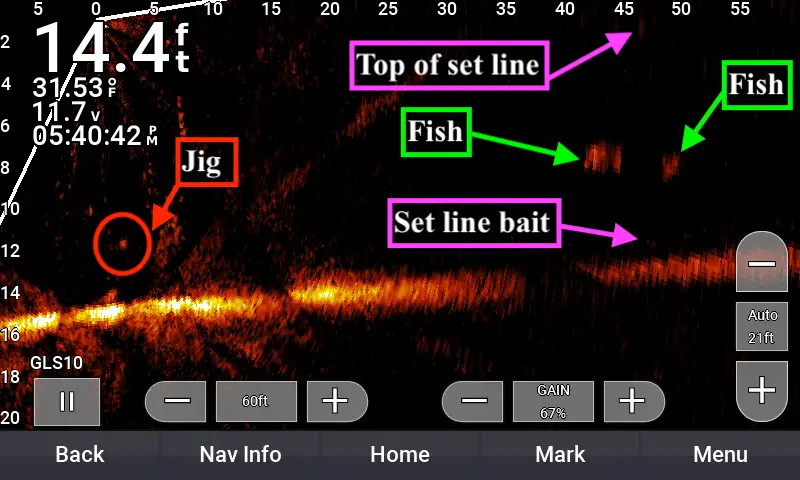
As you can see in the screenshot above, we were able to watch our tip-up from over 45 feet away while we jigged from our hut. In this particular scenario, it also allowed us to see that the fish in the area of the setline were suspended and helped inform us in our decision to move our bait higher in the column.
4 – Waste less time
Forward View is also excellent for saving time and energy when drilling holes.
As mentioned previously, Forward View allows you to expand your view by over 50 feet. This is, of course, great when jigging for distant fish, but it can also allow you to close the distance on these fish by showing you exactly where you should drill your next hole.
“I used to spend hours hole hopping for Perch,” says Ang, “Now, all I do is drill one hole, switch to Forward View, locate my school, and then walk over and drill right on top of them.”
As we identified in our How to Read a Fishfinder article, the key to scanning like this is to have the 90-degree section of the transducer pole and the transducer facing this same way (some do it the opposite making the pole more convenient to turn, it’s a personal choice). This makes it much easier to visualize where in the lake you are scanning and will literally point you in the direction you should drill your next hole. A helpful graphic can be found below:
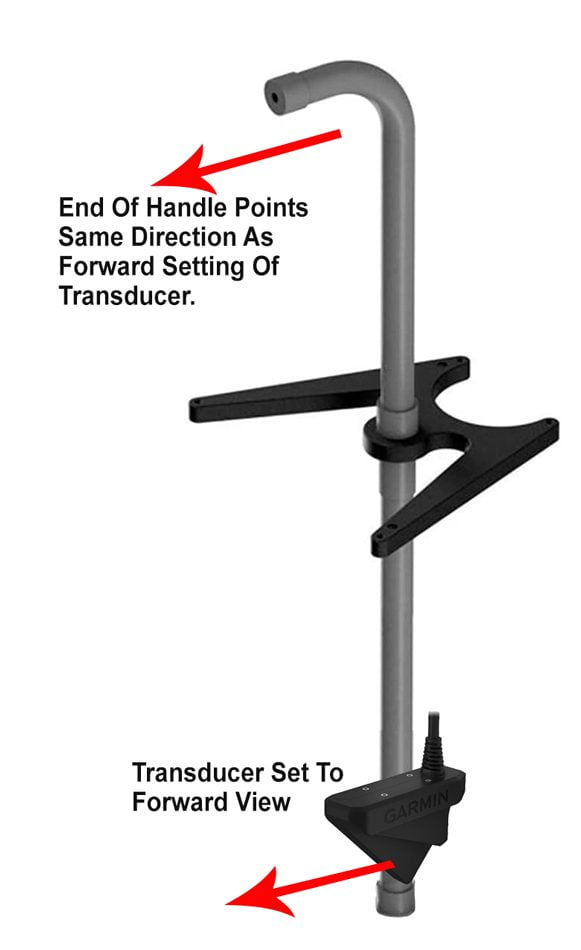
5 – See the true structure
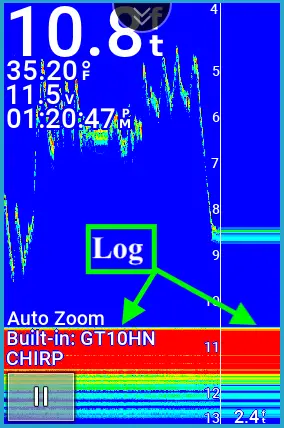
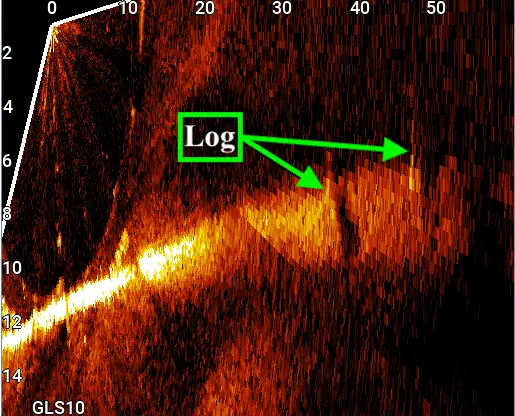
As many are already aware, finding structure is key to finding fish.
This becomes a difficult task, however, in the still-fishing world of ice fishing, as traditional fishfinders paint a somewhat simplified picture of the ground below you.
As you can see in the screenshot above, the traditional screen gave a basic view of what was going on, with the bottom looking mostly flat except for a thin, green bar suggesting something sitting on bottom. When putting LiveScope on and scanning in Forward View, however, it becomes obvious that the area is full of logs and fishing decisions can be made accordingly.
This discovery was key the day this screenshot was taken as wooded structure was an absolute necessity for finding these early-winter Brook Trout.

Another thing that identifying this structure did for us on this particular day was it showed us how high to jig in the column. As you can see on the right side of the screenshot, the area we were fishing was full of logs that rose up from the bottom. When fishing directly over these later in the day, we could tell exactly how high to work our jigs to ensure we were not wasting our time behind a log where fish from the other direction could not see our jigs.
**NOTE – Beware the Ghost Tree

As you have likely noticed throughout this article, we always seem to be fishing right next to large trees.
Though we probably wouldn’t complain if this was true, these “trees” that you see are actually caused by interference and are a common source of confusion for LiveScope users. This issue is primarily reserved for Forward View and tends to be exacerbated in shallow water.
To help reduce this effect, press the menu button while in Forward View, tap Sonar Setup, and then turn on Ghost Reject.
As a word of caution, turning this on will create a bit of a blind spot where the Ghost Tree once appeared. This is why we tend to leave this on low, or even off, as we find that you develop an eye rather quickly for ignoring the tree and spotting the fish that swim by this zone. To spot real trees on Forward View, as we did in the previous section, look for objects that create shadows to ensure you are not chasing ghosts.




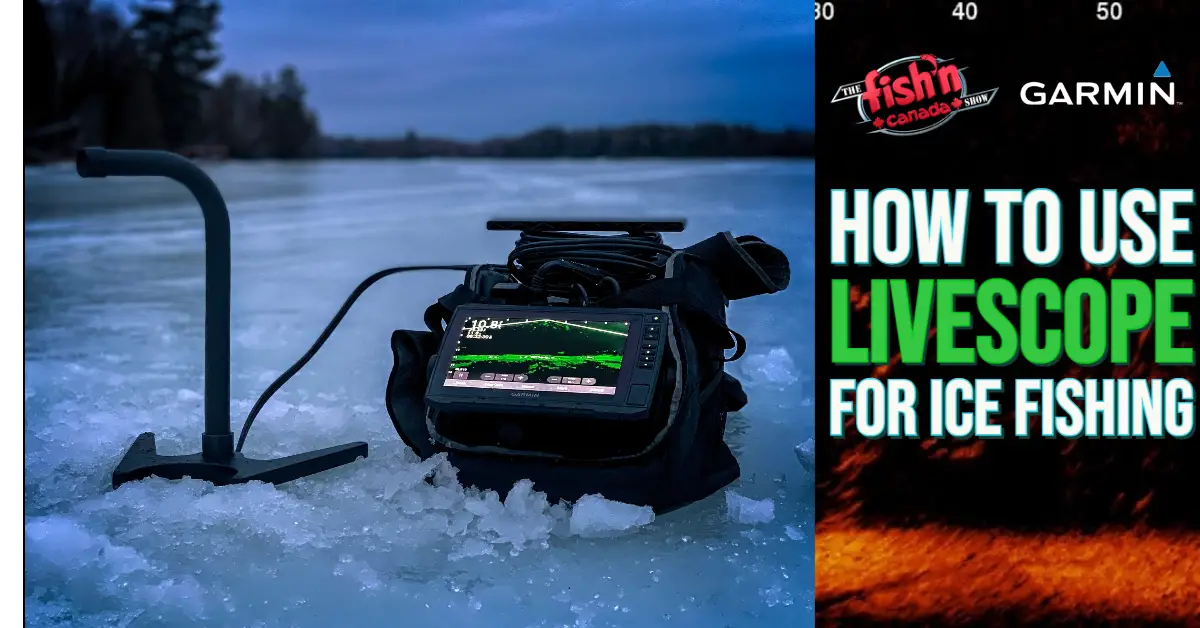

2 Responses
Fingers Crossed !
Great article and alot of detailed information. However with all due respect, fish finders are not Sonar, no matter the trerminology one tends to use! They do no propagate (produce) sound in any way shape or form. Sonar is an acronym for Sound Navigation and Ranging. Echo location is a whole different field of investigation than what is presented here.